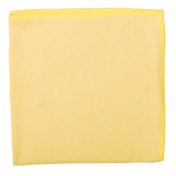In part 6 of the flooring series, we look at cork flooring. In this blog post, you will find out what exactly cork is, which rooms it is suitable for and what the advantages and disadvantages are. Finally, we will look in more detail at cleaning and care so that the floor stays in good condition for as long as possible. Of course, we will also give a recommendation for the right cleaner at the end.
What exactly is cork?
Cork is actually nothing other than bark and is obtained from the cork oak. The oak is peeled every 9 to 10 years and this rhythm does not harm the oak. On the contrary, a cork oak that has been harvested can bind more CO² than one that has not been harvested. The cork oak grows mainly in the Mediterranean region and can produce between 100 and 200 kg of cork at a time . After harvesting, the granules are mixed with a binding agent and pressed into panels. In the past, a binding agent containing formaldehyde was used, which is harmful to health, but nowadays water-based polyurethane and acrylic resins are used. Cork can be laid almost anywhere, as cork is also available in various usage classes. However, it is not ideal for bathrooms and kitchens , as it can swell.
Cork is a sustainable floor
Cork flooring is a 100% sustainable floor that is made from 100% natural raw materials. As already mentioned, the tree is not felled , the bark is simply peeled off. Furthermore, no waste products are produced during harvesting, as everything is further processed. Not only is the material sustainable, the floor itself is also sustainable, as its insulating properties mean that energy costs can be saved. It is also ideal for allergy sufferers and asthmatics , as dust and mites have no chance on cork flooring.
Advantages of cork flooring
The positive properties of cork flooring outweigh the negative ones and speak for it being a sustainable floor. Like most of the other floors discussed so far, cork is easy to lay and easy to maintain . Its elastic properties make it pliable and flexible, but also impact and sound-dampening . The floor is also flame-retardant and impermeable to water . The floor is also ideal for those who like to walk barefoot through their apartment or house, as the floor is usually warm to the feet and can be combined with underfloor heating . Cork flooring is now available in every imaginable color and pattern, so it can look like wood, but it can also look like concrete.
Disadvantages of cork flooring
In addition to the countless advantages, there are a few disadvantages. Unfortunately, cork flooring is not scratch-resistant and heavy furniture could cause dents . In addition, cork flooring is not suitable if the room is flooded with light, because it is not lightfast and will then discolor. In addition, cork flooring expands after a while, so joints must be used. Another disadvantage is that the floor can swell if too much liquid gets on the floor, so it should not be laid in the bathroom or kitchen if possible.
The correct cleaning and care of cork
Cork floors are usually given a surface treatment at the factory to provide protection, which of course requires regular maintenance. After installation, a thorough cleaning must be carried out to provide additional protection. This makes the floor more resistant to dirt and maintenance cleaning is then much easier .
For routine cleaning, it is important to remove dirt regularly. A broom with soft bristles or a vacuum cleaner can be used for this. As soon as dirt is on the floor, it should be removed as quickly as possible. The longer it lies on the floor, the more the floor will be scratched . For wet cleaning, a special cleaner that is specifically designed for cork should be used . Otherwise, cleaning will reduce the lifespan.
Mundizio therefore recommends: Intensive cleaner for parquet & cork from Dr. Schutz
For optimal cleaning, we recommend the intensive cleaner for parquet and cork from Dr. Schutz . The intensive cleaner for parquet and cork is very gentle and removes all residues of cleaning products and polymer dispersion films . It should be used primarily on waterproof sealed parquet and cork floors. It can also be used on oiled and waxed parquet and cork floors.
All blog posts about the flooring series at a glance
- cork
- Carpet
- PVC
- Linoleum
- parquet
- laminate
- natural stone
- tiles



